Home » Evaluation of Knowledge, Awareness and Attitude Regarding Clear Aligner Therapy Amongst BDS Interns: A Cross-sectional Questionnaire-based Survey
Review Article | Vol. 4, Issue 2 | Journal of Clinical Medical Research | Open Access |
Evaluation of Knowledge, Awareness and Attitude Regarding Clear Aligner Therapy Amongst BDS Interns: A Cross-sectional Questionnaire-based Survey
Bhosale MB1, Kolge NE2*, Jain AA3, Ravindranath VK4
1Intern, MGM Dental College and Hospital, Navi Mumbai, India
2Assistant Professor, Department of Orthodontics and Dentofacial Orthopaedics, MGM Dental College and Hospital, Navi Mumbai, India
3Post-graduate Student, Department of Orthodontics and Dentofacial Orthopaedics, MGM Dental College and Hospital, Navi Mumbai, India
4Professor, Department of Orthodontics and Dentofacial Orthopedics, MGM Dental College and Hospital, Navi Mumbai, India
*Correspondence author: Neeraj Eknath Kolge, Assistant Professor, Department of Orthodontics and Dentofacial Orthopedics, MGM Dental College and Hospital, Navi Mumbai, India; Email: [email protected]
Citation: Kolge NE, et al. Evaluation of Knowledge, Awareness and Attitude Regarding Clear Aligner Therapy Amongst BDS Interns: A Cross-sectional Questionnaire-based Survey. Jour Clin Med Res. 2023;4(2):1-12.
Copyright© 2023 by Kolge NE, et al. All rights reserved. This is an open access article distributed under the terms of the Creative Commons Attribution License, which permits unrestricted use, distribution, and reproduction in any medium, provided the original author and source are credited.
| Received 30 Jun, 2023 | Accepted 22 Jul, 2023 | Published 29 Jul, 2023 |
Abstract
Introduction: Clear aligners are emerging as a potential treatment option in the field of Orthodontics. General dentists are usually the first ones to determine the Orthodontic needs of the patient. With an increasing demand for aligners in daily practice; it is vital for dental students/ future practitioners to know about the basics of clear aligner therapy.
Aim and Objectives: The aim of this study was to evaluate the knowledge, awareness and attitude regarding CAT among BDS Interns.
Materials and Methods: A self-designed online questionnaire of 20 questions was designed and distributed among 378 BDS Interns via WhatsApp messenger and email.
Results: The majority of participants were aware of the advantages of Clear Aligner Therapy over fixed appliances. However, most lacked knowledge regarding patient instructions, like wearing time, cleaning methods, etc. There was less awareness about the types of tooth movements possible with CAT, factors influencing tooth movement, associated auxiliaries, etc.
Conclusion: It is important for general dentists to be aware of the various treatment modalities and the associated indications, pros, cons and patient instructions. Thus, there is need for addition of more details regarding advances like Aligners in the curriculum to improve the knowledge, awareness and attitude of emerging dentists.
Keywords: Awareness, Attitude, Clear Aligners, Interns, Knowledge
Abbreviations
CAT: Clear Aligner Therapy
Introduction
The concept of aligners can be traced back to as early as 1945 when Dr. Harold Kesling introduced the use of Tooth Positioning Appliance mainly for final positioning and detailing in conjunction with various appliances [1]. With the advent of technology and advancements, the concept of mainstreaming the Computer Aided Design and Computer Aided Manufacturing (CAD-CAM) based clear aligner system, Invisalign was introduced in 1997 by Align Technology, almost half a century later [2]. This was a huge breakthrough in the field of Orthodontics. Thereafter, there has been extensive research and development put into this to refine and improve the original design. This has been possible due to years of research put majorly into biomechanics and evolution in material science.
With the increasing demand for more esthetic treatment, various appliances like Lingual appliances, ceramic brackets and aligners were introduced [3,4]. Among these, Clear Aligners are gaining popularity in the last decade owing to their improved aesthetics, increased comfort, less chairside time and fewer dietary restrictions imposed on patients [5]. Clear aligners are custom-made plastic trays fabricated in concordance with sophisticated computer algorithms developed in the software program. These are based on patient-specific malocclusion configurations and gradually guide the teeth into their pre-programmed positions [6]. The aligners are made of a resilient plastic material and are fabricated to fit each individual’s teeth. Similar to conventional braces, clear aligners use a gradual force to control tooth movement, but without metal wires or brackets. Earlier clear aligners were used only for mild cases like slight overcrowding or diastema but today, a large part of cases, even moderately or extremely complex, can be managed with clear aligners. General Dentists are usually the first ones to cater to the orthodontic needs of the patient. Most dental students lack knowledge regarding clear aligners. Thus, these future practitioners are unable to guide and instruct the patients efficiently. With an increasing number of patients asking about aligners in daily practice; it is vital for dental students/ future practitioners to know about the basics of clear aligner therapy and guide the patients appropriately. Thus, this cross-sectional questionnaire-based survey aims to evaluate the knowledge, awareness and attitude regarding Clear Aligner Therapy among BDS Interns.
Material and Methods
This was a cross-sectional descriptive study carried out in 2022. A structured multiple-choice questionnaire consisting of 20 questions was self-formulated (Table 1). Ethical approval was obtained from the Institutional Ethical Committee of our institute.
The questionnaire was distributed in form of an online data collection platform (Google Forms) among BDS Interns. The respondents were reached using WhatsApp and emails. A simple random sampling technique was used. A total of 378 interns responded. The questionnaire consisted of questions regarding knowledge, awareness and attitude toward clear aligners. The questions mainly consisted of knowledge regarding the procedure and basic patient instructions. The data was obtained in the form of pie charts and graphs and a table was formulated to calculate the percentage score for each question.
| Q1. Name |
| Q2. Have you heard about clear aligners? |
| Q3. From where did you hear about the aligners? |
| Q4. Do you think aligners are removable? |
| Q5. What kind of cases can be treated with aligners alone? |
| Q6. Do you think there is an age limit for getting orthodontic/aligner treatment? |
| Q7. Do you think that the aligners are less painful than the conventional braces? |
| Q8. Do you think that the aligners are more esthetic than the conventional braces? |
| Q9. Do aligners poke like conventional braces? |
| Q10. Do you need to visit a dental clinic for appointment as frequently as for conventional braces? |
| Q11. Do you think you can sleep with aligners in? |
| Q12. Do you think you should eat with aligners? |
| Q13. Do you have to remove aligners while brushing teeth? |
| Q14. What is the recommended time to wear the aligners? |
| Q15. What decides the total number of aligner trays for a particular case? |
| Q16. Do you need attachment on all teeth? |
| Q17. Do you think you can give clear aligners for patients having individual crowns? |
| Q18. Do you think it is necessary to wear a retainer after clear aligner treatment? |
| Q19. Do you need to clean your retainer regularly? |
| Q20. How do you clean your aligners? |
Table 1: Questionnaire.
Results
378 BDS Interns from various institutions answered overall. The majority of the questions focused on the fundamental information a clinician should be familiar with before advising any patient about clear aligner therapy. These included the types of cases that can be solved with Clear Aligner Therapy, the variables influencing the duration of treatment, the advantages over traditional braces and guidelines for using Clear Aligners.
The majority of users (83%) were aware of Clear Aligners (Fig. 1) and social media (57.2%) and the curriculum (33.4%) (Fig. 2) were the most popular sources of information. Only 8.8% of people responded negatively to the question about Clear Aligners being removable, compared to 79.9% who were in favor (Fig. 3). While 38.5% of participants believe that moderate crowding cases can also be treated, 53% of participants believed that only minor crowding cases could be treated with Clear Aligners (Fig. 4). The majority of the participants were of the opinion that there is an age limit for getting Clear Aligner Therapy (42.8%) (Fig. 5). Aligners are less painful than traditional braces, according to 66.3% of subjects (Fig. 6). Additionally, the majority (79.9%) agreed that Clear Aligners are more aesthetically pleasing than traditional braces (Fig. 7).
The majority of the participants think aligners do not poke like conventional braces (61.5%) (Fig. 8) and do need regular visits to the dental clinic as conventional braces (51.8%) (Fig. 9). 53.3% and 52.4% of the participants agreed that patients should be permitted to sleep with their aligners on (Fig. 10) and should refrain from eating while wearing them (Fig. 11) respectively. 70.5% of respondents said patients should remove their aligners while brushing (Fig. 12). Aligners should be worn between 11 and 14 hours per day, according to 37.1% of subjects and between 20 and 22 hours per day, according to 11.3% (Fig. 13).
According to most participants, the total number of aligner trays for a particular case depends on the type of desired tooth movement [translation (21.5%) and degree of rotation correction (38.3%)]. Moreover, just 9.4% of respondents felt the patient’s periodontal health was important (Fig. 14). The need for attachments on all teeth received a favorable answer of 43.2% (Fig.15) and 50.6% of respondents believed that patients with individual crowns could benefit from clear aligners (Fig. 16). The need for wearing retainers was acknowledged by 53.5% of the subjects (Fig. 17). The majority of participants (70.3%) agreed that cleaning the aligners frequently was necessary (Fig. 18) and about 48.5% said that brushing and cleansing tablets or powder were both necessary for cleaning the aligners (Fig. 19).
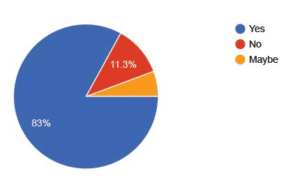
Figure 1: Have you heard about clear aligners?
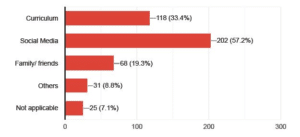
Figure 2: From where did you hear about the aligners?
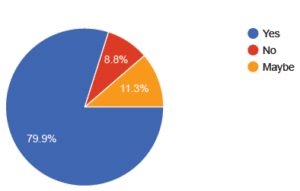
Figure 3: Do you think aligners are removable?
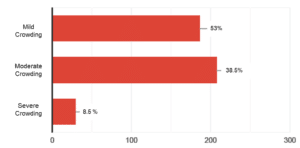
Figure 4: What kind of cases can be treated with aligners alone?
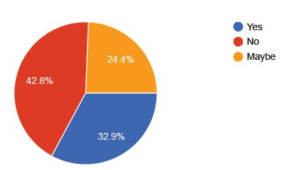
Figure 5: Do you think there is an age limit for getting orthodontic/aligner treatment?

Figure 6: Do you think that the aligners are less painful than the conventional braces?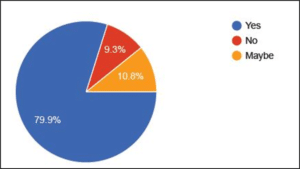
Figure 7: Do you think that the aligners are more esthetic than the conventional braces?

Figure 8: Do aligners poke like conventional braces?
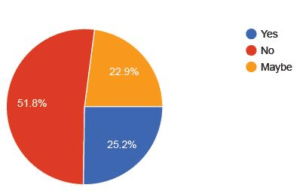
Figure 9: Do you need to visit a dental clinic for appointment as frequently as for conventional braces?
Figure 10: Do you think you can sleep with aligners in?
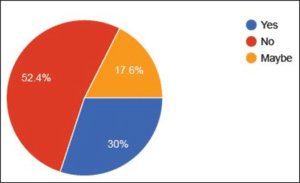
Figure 11: Do you think you should eat with aligners?
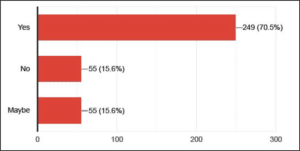
Figure 12: Do you have to remove aligners while brushing teeth?
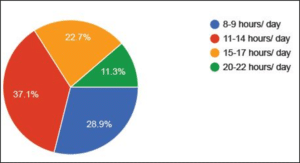
Figure 13: What is the recommended time to wear the aligners?

Figure 14: What decides the total number of aligner trays for a particular case?
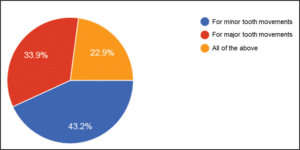
Figure 15: Do you need attachment on all teeth?
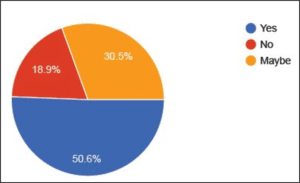
Figure 16: Do you think you can give clear aligners for patients having individual crowns?
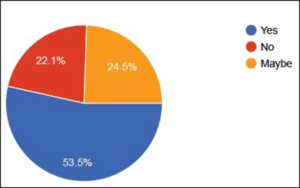
Figure 17: Do you think it is necessary to wear a retainer after clear aligner treatment?
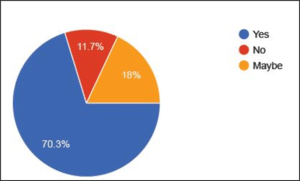
Figure 18: Do you need to clean your retainer regularly?
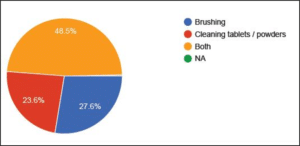
Figure 19: How do you clean your aligners?
Discussion
Patient awareness regarding Clear Aligners is on a rise due to the advent of many foreign and indigenous aligner companies marketing their products making patients more aware of this modality of treatment. Aligners were initially introduced with the purpose of minor tooth corrections, have undergone numerous years of research and development and have been refined to treat various kinds of malocclusions.
Most orthodontic patients reporting to a private clinic, usually have their first encounter with a general practitioner. Orthodontics being a specialty field is taught to a very basic level in an undergraduate course. However, a general practitioner needs to be able to at least address the patient’s queries regarding treatment modalities available in the market, along with their pros and cons. Thus, this questionnaire-based survey was carried out to evaluate the awareness among BDS Interns regarding one such treatment modality, Clear Aligner Therapy.
Social Media platforms like Twitter, YouTube, Instagram, Facebook, etc. have become extremely vital marketing tool, which is used for creating awareness as well expanding their reach among the general public [7,8]. The majority of participants in this study had heard about Clear Aligners on social media (57.2%), which was the most common source of awareness. 79.9% of participants were aware that the Clear Aligners are removable. The ability to remove the appliance is a major advantage over fixed appliances as the patients have fewer food restrictions and can maintain oral hygiene better, improving the periodontal status [9].
There was an almost equal response to the kind of cases that could be treated with aligners alone; 53% mild crowding and 58.9% moderate crowding. Rossini et al2 conducted a systematic review to study the efficacy of Clear Aligners in controlling Orthodontic tooth movement. They concluded that Clear Aligner Therapy is effective in aligning and leveling the arches, causing anterior intrusion and molar distalization. However, correction of rotation and extrusive movements were difficult with CAT. They reported that Clear Aligners alone could not cause all tooth movements. Auxiliaries like attachments, IPR, elastics, etc. were required to increase their efficiency.
The majority of participants believed that there is an age limit for use of CAT (42.8%). Clear aligner Therapy can be used in patients of any age; however, it should be used with caution. Allahham, et al., reported that non-extraction treatment of mild to moderate crowding in adult patients with CAT led to an increased occurrence of Fenestrations and Dehiscence [10].
Thus, both the type of tooth movement (Translatory or rotational) and the periodontal status of the patient will determine the number of Aligner trays that will be required for a particular case. Around 20% overcorrection of rotations is recommended by authors since rotations are difficult due to rounded tooth crowns. It is vital to stage the Orthodontic Tooth Movement and consider factors like periodontal status for successful results. However, most participants believed that only tooth movement, translatory movement (21.5%), or rotation correction (38.3%) determined the number of trays for a particular case.
66.3% of participants gave a positive response to CAT being less painful. Gao, et al., carried out a study to compare the pain perception, anxiety levels and Oral Health-Related Quality of Life (OHRQoL) between patients receiving CAT and Fixed appliance treatment [11]. They reported that the pain perception and anxiety levels were lower in patients undergoing CAT during the initial stages of Orthodontic treatment with an improved OHRQoL. Another advantage of CAT is the improved esthetics; a major reason for its surge in demand. The majority of the participants agreed to this (79.9%). In clear aligners, the problem of poking wires is eliminated which reduces the discomfort of the patient. 61.5% of participants agreed to this.
Most participants answered that the patient does not need to visit the dentist as frequently as for fixed appliances (51.8%). This is true but it mainly depends on the patient’s compliance. Only for compliant patients, the dental visit is every 10-12 weeks [12].
The recommended time to wear the aligners is 20-22 hours/per day [13]. The patient should be instructed to remove the Clear Aligners only while eating and brushing. However, according to the majority of participants, the patient can sleep (53.3%) with Clear Aligners on and most believed that the patient cannot eat with Clear Aligners (52.4%). The recommended time to wear the aligners was 11-14 hours as per most participants (37.1%). Most participants agreed that the patients were supposed to remove the Clear Aligners while brushing their teeth (70.5%).
Attachments are auxiliaries that increase the predictability of clear aligners to produce orthodontic tooth movements. Nucera, et al., carried out a systematic review where they included studies that show that auxiliaries improve the efficiency of CAT to carry out difficult tooth movements like bodily tooth movement (increasing the number to increase anchorage), torquing, rotations (along with appropriate auxiliaries), extrusion, etc [14]. Attachments also increase the retention of the Clear Aligner trays while continuous removal and wear. However, they are not a necessity for minor tooth movements. The majority of participants were of the opinion that attachments were required on all teeth for every type of tooth movement.
The demand for CAT in adult patients is on a rise due to esthetics and increased comfort mainly. The presence of multiple restorations, including crowns and bridges is very common. The use of CAT in patients with individual crowns is possible, however, the difficulty lies in the bonding of attachments. Alsaud, et al., carried out an in-vitro study to compare the different bonding methods of composite attachments on ceramic [15]. They concluded that the combination of Air abrasion, Assure Universal Bonding (AUB) agent and Filtek Z350 showed the highest Shear Bond Strength followed by the combination of Hydrofluoric acid (HFA) with AUB and Filtek Z350. 9.6% HFA was used for 1 min and 50 µm Al2O3 for 5 s under 2 bar pressures in a perpendicular direction to the ceramic block surface and at a 10 mm distance using a sandblaster unit was used for air abrasion. In our study, 50.6 % of participants gave a positive response to the use of CAT in patients with individual crowns, while 30.5% gave a negative response.
Retention is the most important phase of any Orthodontic treatment. Irrespective of the appliance used, the retention phase is a must, without which relapse ought to happen.53.5% of participants were affirmative of the necessity to wear retainers after CAT.
When asked regarding the cleaning and disinfection protocol of Clear Aligners, 70.3% of participants gave a positive response to the need for cleaning Clear Aligners regularly. 48.5% of participants believed that both brushing and cleaning tablets/powder is required for cleaning the Aligner trays while the remaining participants in equal proportion thought that either brushing or cleaning tablets/powder is required. Tektas, et al., reported that the biofilm formation and initial bacteria adhesion were equal for enamel, metal brackets and aligners [16]. Moreover, due to the presence of grooves and ridges, microbial adhesion is more. Charavet, et al., carried out a systematic review of the cleaning and disinfection protocols for cleaning Clear Aligners [17]. They concluded that a multistep approach i.e., a combination of mechanical (Brushing) and chemical (chlorhexidine antibacterial substance, anionic or cationic detergents, or effervescent tablets) methods is the most effective method for cleaning and disinfecting the aligner trays.
Conclusion
Orthodontics is a specialty field wherein; undergraduates have minimal information regarding the advances in the subject. However, there are a few advances that should be emphasized in the learning course. General dentists are usually the first ones to deal with orthodontic patients reporting to any clinic wanting to undergo orthodontic treatment. Thus, it becomes important for them to be aware of the various treatment modalities and the associated indications, pros, cons and patient instructions. Thus, in this study, we have evaluated their knowledge and awareness regarding these areas, concerning clear aligners. Even though most BDS Interns were aware about the basics of clear aligner therapy, most lacked knowledge regarding the patient instructions and the factors that need to be considered while selecting this appliance, like the tooth movements possible, factors affecting the tooth movement, the associated auxiliary used, etc. Thus, there is a need for the addition of more details regarding such advances in the curriculum to improve the knowledge, awareness and attitude of emerging dentists.
Funding
The authors received no financial support for the research, authorship and/or publication of this article.
Ethical Approval
Ethical approval was given by the Institutional Ethical Committee of our institute.
Patient Consent
This was a questionnaire-based survey for BDS Interns. Patient consent was not required.
Conflict of Interest
The author has no conflict of interest to declare.
References
- D Kesling. The philosophy of the tooth positioning appliance. Am J Orthodontics and Oral Surgery. 1945;31(6):297-304.
- Rossini G, Parrini S, Castroflorio T, Deregibus A, Debernardi CL. Efficacy of clear aligners in controlling orthodontic tooth movement: a systematic review. Angle Orthod. 2015;85(5):881-9.
- Ganta GK, Cheruvu K, Ravi RK, Reddy RP. Clear aligners, the aesthetic solution: a review. Int J Dental Materials. 2021;3(3):90-5.
- Rosvall MD, Fields HW, Ziuchkovski J, Rosenstiel SF, Johnston WM. Attractiveness, acceptability, and value of orthodontic appliances. Am J Orthodontics and Dentofacial Orthopedics. 2009;135(3):276-e1.
- Buschang PH, Shaw SG, Ross M, Crosby D, Campbell PM. Comparative time efficiency of aligner therapy and conventional edgewise braces. Angle Orthod 2014;84:391-6.
- Tai S, Huffmann L. Clear aligner technique. USA. Quintessence Publishing. 2018.
- Meira TM, Prestes J, Gasparello GG, Antelo OM, Pithon MM, Tanaka OM. The effects of images posted to social media by orthodontists on public perception of professional credibility and willingness to become a client. Prog Orthod. 2021;22(1):7.
- Noll D, Mahon B, Shroff B, Carrico C, Lindauer SJ. Twitter analysis of the orthodontic patient experience with braces vs Invisalign. Angle Orthod. 2017;87(3):377-83.
- Weir T. Clear aligners in orthodontic treatment. Aust Dent J. 2017;62(Suppl 1):58-62.
- Allahham DO, Kotsailidi EA, Barmak AB, Rossouw PE, El-Bialy T, Michelogiannakis D. Association between non-extraction clear aligner therapy and alveolar bone dehiscences and fenestrations in adults with mild-to-moderate crowding. Am J Orthod Dentofacial Orthop. 2023;163(1):22-32.e4.
- Gao M, Yan X, Zhao R. Comparison of pain perception, anxiety, and impacts on oral health-related quality of life between patients receiving clear aligners and fixed appliances during the initial stage of orthodontic treatment. Eur J Orthod. 2021;43(3):353-9.
- Tamer İ, Öztaş E, Marşan G. Orthodontic treatment with clear aligners and the scientific reality behind their marketing: a literature review. Turk J Orthod. 2019;32(4):241-6.
- Al-Nadawi M, Kravitz ND, Hansa I, Makki L, Ferguson DJ, Vaid NR. Effect of clear aligner wear protocol on the efficacy of tooth movement. Angle Orthod. 2021;91(2):157-63.
- Nucera R, Dolci C, Bellocchio AM, Costa S, Barbera S, Rustico L, et al. Effects of composite attachments on orthodontic clear aligners therapy: a systematic review. Materials. 2022;15(2):533.
- Alsaud BA, Hajjaj MS, Masoud AI, Abou Neel EA, Abuelenain DA, Linjawi AI. Bonding of clear aligner composite attachments to ceramic materials: an in-vitro Materials. 2022;15(12):4145.
- Tektas S, Thurnheer T, Eliades T, Attin T, Karygianni L. Initial bacterial adhesion and biofilm formation on aligner materials. Antibiotics. 2020;9(12):908.
- Charavet C, Gourdain Z, Graveline L, Lupi L. Cleaning and disinfection protocols for clear orthodontic aligners: A systematic review. InHealthcare 2022;10(2):340.
This work is licensed under a Creative Commons Attribution 2.0 International License.
Author Info
Bhosale MB1, Kolge NE2*, Jain AA3, Ravindranath VK4
1Intern, MGM Dental College and Hospital, Navi Mumbai, India
2Assistant Professor, Department of Orthodontics and Dentofacial Orthopaedics, MGM Dental College and Hospital, Navi Mumbai, India
3Post-graduate Student, Department of Orthodontics and Dentofacial Orthopaedics, MGM Dental College and Hospital, Navi Mumbai, India
4Professor, Department of Orthodontics and Dentofacial Orthopedics, MGM Dental College and Hospital, Navi Mumbai, India
*Correspondence author: Neeraj Eknath Kolge, Assistant Professor, Department of Orthodontics and Dentofacial Orthopedics, MGM Dental College and Hospital, Navi Mumbai, India; Email: [email protected]
Copyright
Copyright© 2023 by Kolge NE, et al. All rights reserved. This is an open access article distributed under the terms of the Creative Commons Attribution License, which permits unrestricted use, distribution, and reproduction in any medium, provided the original author and source are credited.
Citation
Citation: Kolge NE, et al. Evaluation of Knowledge, Awareness and Attitude Regarding Clear Aligner Therapy Amongst BDS Interns: A Cross-sectional Questionnaire-based Survey. Jour Clin Med Res. 2023;4(2):1-12.


